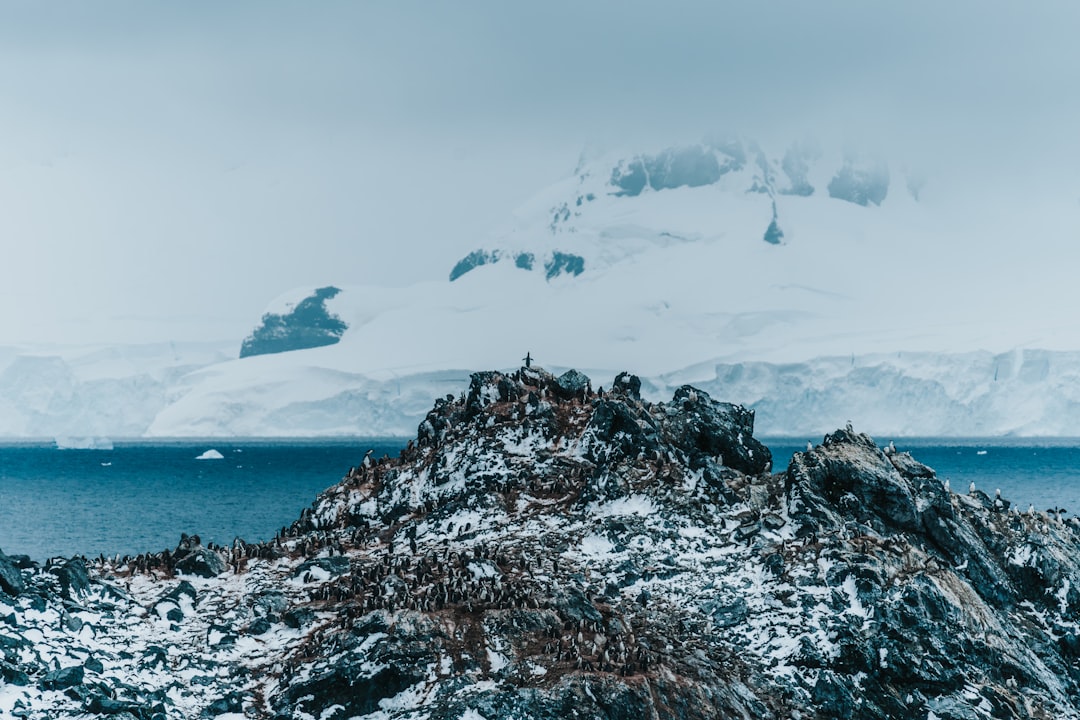The Drake Passage, a body of water situated between the southern tip of South America and Antarctica, is renowned for its tumultuous seas and breathtaking vistas. Stretching approximately 800 kilometers (500 miles) from Cape Horn to the Antarctic Peninsula, this passage serves as a critical maritime route for vessels venturing to the icy continent. The Drake Passage is not only a geographical marvel but also a significant point of interest for adventurers, scientists, and nature enthusiasts alike.
Its unique position makes it a vital conduit for ocean currents and marine life, contributing to its ecological importance. Navigating the Drake Passage is often considered a rite of passage for those seeking to explore Antarctica. The waters are notorious for their unpredictable weather patterns and rough seas, which can challenge even the most seasoned mariners.
Despite these challenges, the allure of the passage remains strong, drawing travelers from around the globe who are eager to experience its raw beauty and the thrill of adventure. The Drake Passage embodies the spirit of exploration, offering a gateway to one of the last great wildernesses on Earth.
Key Takeaways
- The Drake Passage is a body of water between South America’s Cape Horn and the South Shetland Islands of Antarctica, known for its challenging sailing conditions.
- The Drake Passage has a rich historical significance as the route taken by famous explorers such as Sir Francis Drake and Charles Darwin during their expeditions.
- The weather and climate conditions in the Drake Passage are characterized by strong winds, rough seas, and rapidly changing weather patterns, making it one of the most challenging maritime environments in the world.
- The Drake Passage is home to a diverse range of wildlife, including penguins, seals, and various species of seabirds, making it a popular destination for nature enthusiasts and wildlife photographers.
- Navigating the Drake Passage poses significant risks and challenges due to its unpredictable weather, strong currents, and potential for icebergs, requiring careful planning and seamanship skills.
Historical significance of the Drake Passage
The historical significance of the Drake Passage cannot be overstated. Named after Sir Francis Drake, the English sea captain and explorer who navigated these waters in the late 16th century, the passage has played a pivotal role in maritime history. Drake’s journey marked one of the first recorded crossings of this treacherous stretch of ocean, paving the way for future explorers and traders.
His exploits not only contributed to the age of exploration but also highlighted the strategic importance of this maritime route in connecting the Atlantic and Pacific Oceans. Throughout history, the Drake Passage has been a site of numerous expeditions, each contributing to our understanding of geography and navigation. The passage became a crucial route for whalers and sealers in the 19th century, as they sought resources in the rich waters surrounding Antarctica.
Additionally, it has served as a pathway for scientific research expeditions aimed at studying the unique ecosystems found in these frigid waters. The legacy of exploration continues today, as modern adventurers and researchers traverse the passage, building upon the rich tapestry of history that defines this remarkable region.
Weather and climate conditions in the Drake Passage

The weather and climate conditions in the Drake Passage are notoriously volatile, characterized by rapid changes that can occur within minutes. The region is influenced by a combination of factors, including its geographical location and the confluence of ocean currents. The passage is known for its strong winds, often reaching gale force, which can create towering waves and challenging sailing conditions.
Mariners must be prepared for sudden storms and shifting weather patterns that can transform a calm sea into a tumultuous one in no time. Temperatures in the Drake Passage vary significantly depending on the season. During the summer months, temperatures can range from just above freezing to mild conditions, while winter brings frigid temperatures that can plunge well below zero.
The presence of icebergs and sea ice further complicates navigation during certain times of the year. Understanding these climatic nuances is essential for anyone planning to cross the Drake Passage, as they can greatly impact both safety and comfort during the journey.
Wildlife and natural attractions in the Drake Passage
| Wildlife and Natural Attractions in the Drake Passage |
|---|
| 1. Penguins |
| 2. Whales |
| 3. Seals |
| 4. Albatrosses |
| 5. Icebergs |
| 6. Spectacular Scenery |
The Drake Passage is not only a challenging maritime route but also a haven for diverse wildlife and stunning natural attractions. The nutrient-rich waters support an abundance of marine life, making it an ideal location for observing various species of whales, seals, and seabirds. Among the most notable inhabitants are humpback whales, orcas, and blue whales, which can often be spotted breaching or feeding in these waters.
The passage serves as a critical feeding ground for these majestic creatures during their migratory journeys. In addition to marine mammals, the Drake Passage is home to an array of seabirds, including albatrosses and petrels, which glide gracefully over the waves. These birds are not only a delight to observe but also play an essential role in the ecosystem by helping to maintain balance within marine food chains.
The breathtaking landscapes surrounding the passage, with their rugged coastlines and towering icebergs, further enhance its appeal as a destination for nature lovers and photographers alike. The combination of wildlife and stunning scenery makes crossing the Drake Passage an unforgettable experience.
Navigational challenges and risks in the Drake Passage
Navigating the Drake Passage presents numerous challenges and risks that require careful consideration and preparation. The unpredictable weather patterns can create hazardous conditions for vessels, with strong winds and high waves posing significant threats to navigation. Mariners must be adept at reading weather forecasts and understanding how rapidly changing conditions can impact their journey.
Additionally, the presence of icebergs and sea ice adds another layer of complexity to navigation in this region. The currents within the Drake Passage are also formidable, with powerful flows that can affect a vessel’s course and speed. These currents can create areas of turbulence known as “the Roaring Forties,” where waves can reach staggering heights.
For inexperienced sailors or those aboard smaller vessels, these conditions can be particularly daunting. Understanding these navigational challenges is crucial for ensuring a safe crossing through this iconic passage.
Safety precautions and preparations for crossing the Drake Passage

Safety precautions and thorough preparations are paramount when planning to cross the Drake Passage. Mariners should ensure that their vessels are equipped with all necessary safety gear, including life jackets, flares, and emergency beacons. It is also advisable to have a well-stocked first aid kit on board to address any potential medical issues that may arise during the journey.
Additionally, having reliable communication equipment is essential for staying connected with other vessels or emergency services if needed. Before embarking on a crossing, it is vital to conduct comprehensive research on weather patterns and sea conditions specific to the time of year. Mariners should consult experienced sailors or guides familiar with the passage to gain insights into potential hazards and best practices for navigation.
Proper training in seamanship and emergency procedures can also enhance safety during the crossing. By taking these precautions seriously, adventurers can significantly reduce risks associated with navigating this challenging waterway.
Choosing the right vessel for crossing the Drake Passage
Selecting the right vessel for crossing the Drake Passage is crucial for ensuring both safety and comfort during the journey. The type of vessel chosen will depend on various factors, including experience level, budget, and intended duration of travel. Larger ships designed for polar expeditions often provide greater stability in rough seas and are equipped with advanced navigation technology to handle challenging conditions.
These vessels typically offer amenities that enhance passenger comfort during long crossings. For those opting for smaller boats or yachts, it is essential to ensure that they are seaworthy and capable of handling turbulent waters. Vessels should be equipped with robust engines and have adequate storage for supplies needed during the journey.
Additionally, it is advisable to choose a vessel with experienced crew members who are familiar with navigating through the Drake Passage’s unique challenges. Ultimately, selecting an appropriate vessel can make all the difference in having a successful crossing.
Tips for managing seasickness and motion sickness in the Drake Passage
Seasickness is a common concern for many travelers embarking on a journey through the Drake Passage due to its notorious rough waters. To mitigate discomfort associated with motion sickness, several strategies can be employed before and during travel. One effective approach is to choose accommodations on lower decks or midships where motion is less pronounced compared to higher decks or bow areas.
This positioning can help reduce feelings of nausea. Additionally, travelers may consider taking over-the-counter medications designed to prevent motion sickness or using natural remedies such as ginger or acupressure bands before setting sail. Staying hydrated and consuming light meals can also alleviate symptoms associated with seasickness.
Engaging in activities that distract from motion sensations—such as reading or socializing—can further help manage discomfort during turbulent crossings.
Navigation routes and strategies for crossing the Drake Passage
When planning a crossing through the Drake Passage, understanding navigation routes and strategies is essential for ensuring a successful journey. The most common route taken by vessels is from Ushuaia in Argentina to various points along Antarctica’s coastline. This route allows travelers to experience some of the most breathtaking scenery while navigating through challenging waters.
Mariners should also consider timing their crossing based on seasonal weather patterns to optimize safety and comfort. The summer months (November to March) generally offer milder conditions compared to winter months when storms are more frequent. Utilizing advanced navigation technology such as GPS systems can aid in plotting courses that avoid hazardous areas while maximizing efficiency during transit through this iconic passage.
Famous expeditions and explorations through the Drake Passage
The Drake Passage has been witness to numerous famous expeditions that have shaped our understanding of polar exploration and marine science. One notable expedition was led by Ernest Shackleton aboard his ship Endurance in 1914 when he attempted to cross Antarctica via this treacherous route. Although Shackleton’s journey faced insurmountable challenges leading to his ship becoming trapped in ice, his remarkable leadership during adversity has become legendary in maritime history.
Another significant expedition was conducted by oceanographer Jacques Cousteau in 1972 when he explored marine life within these waters using his research vessel Calypso. Cousteau’s work brought attention to environmental issues affecting polar regions while showcasing their unique ecosystems through captivating documentaries that inspired generations of conservationists.
The allure and adventure of navigating the Drake Passage
In conclusion, navigating the Drake Passage offers an unparalleled blend of adventure, natural beauty, and historical significance that captivates explorers from around the world.
With proper preparation, safety measures in place, and an understanding of its unique characteristics, adventurers can embark on an unforgettable journey through these storied waters.
The Drake Passage stands as a testament to human resilience against nature’s formidable forces while serving as a gateway into one of our planet’s most pristine environments—Antarctica itself. As explorers continue to traverse its depths today—following in footsteps left by legendary figures throughout history—they contribute not only to their own personal narratives but also add new chapters to an ever-evolving tale woven into this remarkable maritime landscape.
For those interested in learning more about the challenges and experiences of navigating this infamous stretch of water, a related article on the topic can be found on MyGeoQuest. This article delves into the unique geographical and meteorological factors that contribute to the Drake Passage’s reputation. To explore this further, you can read the article by visiting
